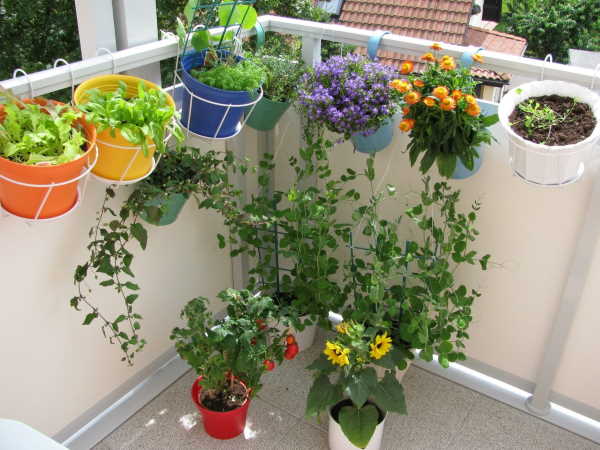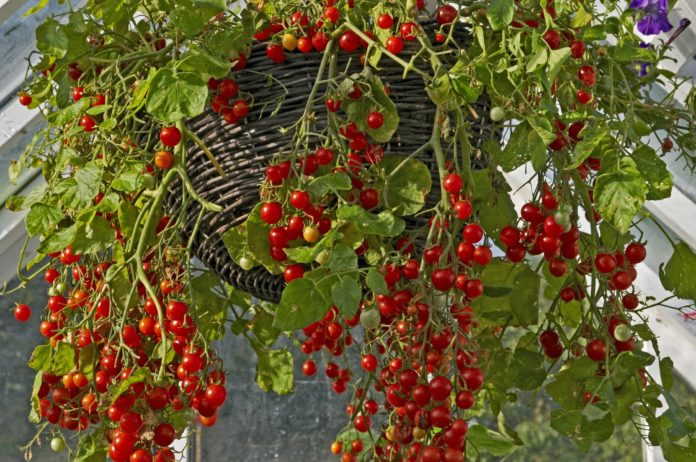Planting vegetables and fruits when you have a tiny or nonexistent garden is not impossible, and a great way of getting around this is to grow your bounty in hanging baskets.
There are lots of different designs of hanging baskets, and some more costly than others. However, many are made of plastic-coated wire suspended from chains and used with a liner. You can, however, make your own hanging baskets from household objects that could have ended up in landfill – there are so many containers you can use i.e., colanders, leaky buckets, old ice cream tins, boots, or even food cans!
Some good spots for the baskets can be placed by your front door, fences, balconies, gazebos and even trees. Perfect places for blossom or crop-filled baskets are by the front door, under house eaves, from fences, balconies, arbors, gazebos, and in trees. Visitors will comment on the basket’s beauty, but almost never realize that it’s loaded with vegetables!
Wherever you choose to hang them, they will bring about natural beauty to your environment, improving air quality, relieving stress and boosting your health.
Hanging eggplants, cherry tomatoes, lettuce, peppers, green beans, chilies, or mix up some herbs with your veggies, which provides you with easy picking of organic produce when creating near complete meals. And for the sweet tooth, another favourite is the ever-popular strawberry plant!
If you are determined to grow food in baskets, but also love flowers, don’t combine flowers and the veggie plants together as it doesn’t tend to work.
Keep in mind the light exposure where you will be hanging the planter.
Tomatoes, eggplant, and peppers need high heat and levels of sunlight, while lettuce and spinach do better in lower light.

If you’re confident, you can even have upside down hanging planters that are designed for some tomatoes, peppers, and even green beans. They allow the plants to grow straight out of the bottom of the planter and prevent gravity from bending stems and minimizing the moisture and nutrients available to the fruit producing ends.
Growing food treats in hanging baskets have the same needs as those in the ground. The container needs excellent drainage, a stout hanging chain, nutrient rich clean soil, consistent moisture, protection from strong winds, and the correct lighting situation. As with any plant that is productive, more flowering and fruiting will occur with regular feeding. Hanging vegetable plants perform well with a liquid fertilizer, applied once a week, at watering.
Lastly, remember “plant spacing” – the general rule of thumb when planting a hanging basket is to use one plant per inch of basket diameter – so 12 plants per 30cm (12″) hanging basket.
So, get cracking and start growing as September is the best time to plant, and if you want to see successful hanging baskets, head “up the hill” to Granny Mouse Country House & Spa and take in the beautiful cheerful gardens.
Inspired by:
https://www.gardeningknowhow.com/special/containers/vegetables-for-hanging-baskets.htm












